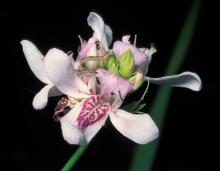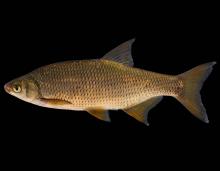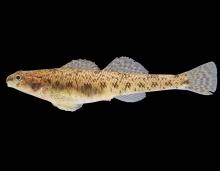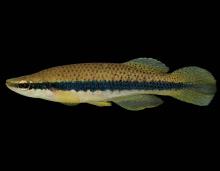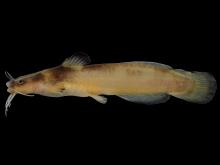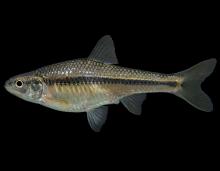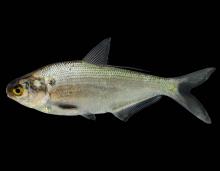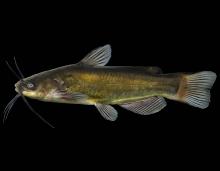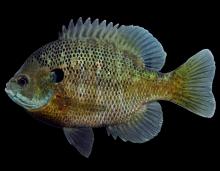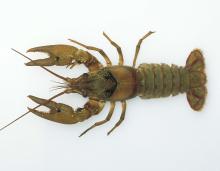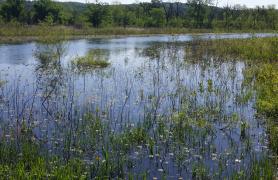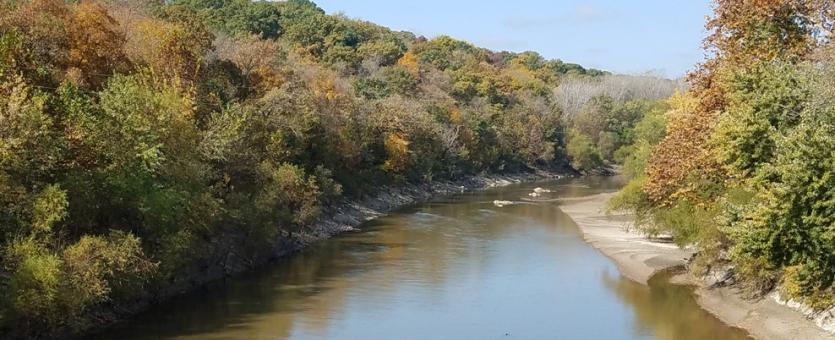
Missouri biologists specializing in aquatic animals (aquatic fauna) have divided the state into four Aquatic Faunal Regions to describe where fish, crayfish, and other aquatic animals live. The Prairie Faunal Region is one of these four divisions.
The land surrounding a stream has a major influence on its character and form. The grassland and prairie region, located mostly in the northern half of Missouri, is very different from the rocky, rugged Ozarks in the southern part of the state. So the streams that occur in the prairie region are quite different from those in the Ozarks.
Grassland and Prairie Streams
The Prairie Aquatic Faunal Region includes most of the state north of the Missouri River, plus a wedge-shaped area south of the river along the Kansas state line. This region is mostly flat or rolling plains. The area north of the Missouri River was flattened and smoothed by glaciers long ago; the prairies south of the river in western Missouri were not glaciated.
Shales and thin sandstones are the principal bedrocks, but these can be covered by as much as 150 feet by loess soils (loess is a fine-grained material blown by winds during glacier times and which collected, like dunes, in certain areas; it is the fine, compacted, yellowish soil visible in roadcuts in northern Missouri).
Missouri’s prairie regions, today, are dominated by cropland, but before settlers arrived and broke the sod with their plows, these lands were covered by treeless tallgrass prairie, with woods in the more hilly areas. Those native prairies, savannas, and woodlands are nearly all gone.
The Prairie Aquatic Faunal Region is drained by a number of rivers. These typically occupy broad, flat valleys that slope gradually into the surrounding uplands. Originally, most of these low-gradient streams meandered in S-shaped courses and often formed oxbow lakes and sloughs as they shifted their beds. Most of these streams, however, have been channelized and are now straight with a nearly uniform depth.
Thus, in northern Missouri, the plant communities on land have been drastically changed (from native prairies to cropland), and the streams themselves have been altered, too (historically meandering streams engineered to be straight with a relatively stable central channel). These are examples of altered habitats.
The stream bottoms in the Prairie Region are typically made of fine substrates (silt, sand, or gravel), and the water is generally turbid (muddy looking) most of the time, due to erosion of clay from the fine-textured soils typical of northern Missouri.
Unlike Ozark streams, there are few springs to feed our prairie rivers, although a few highly mineralized springs are present. Stream flow is less constant in the Prairie Region than elsewhere in Missouri.
The character of streams in the Prairie Aquatic Faunal Region changes slightly from west to east and from north to south. Streams in northwest Missouri conform most closely to the description just given, while streams to the south and east gradually transition into characteristics of Ozark streams—and as the stream character changes, the plants and animals they support change, too.
An especially notable transition zone is where the Ozark Region borders and blends into the Prairie Region, along a line drawn roughly from Morgan through Jasper counties. This gradual transformation of stream characteristics supports a remarkable assemblage of fishes, crayfishes, and other aquatic organisms, many of which are found no where else in the state.
Prairie Region Rivers
The following major rivers and their systems of tributary streams are prime examples of the Prairie Aquatic Faunal Region.
Prairie Region North of the Missouri River
- Rivers flowing east into the Mississippi River: the Des Moines, Fox, Wyaconda, Fabius, North, South, Salt, and Cuivre rivers;
- Rivers flowing south into the Missouri River: Chariton, Grand, Platte, Nodaway, Tarkio, Nishnabotna rivers. From Boone County and eastward, only short, direct tributaries of the Missouri River drain this region.
Prairie Region South of the Missouri River
- Most is drained through the Osage River;
- A small section in the southern part of this wedge is drained by the North Fork of the Spring River;
- Much of the northern part of this section drains into the Missouri River via several tributaries, the largest being the Blackwater and the Lamine rivers.
Reservoirs and Ponds
Reservoir construction has been less extensive in the Prairie Region than in the Ozarks. The largest reservoir in the region is Truman, on the upper Osage River. Other major reservoirs in the Prairie Region are Mark Twain, Long Branch, Thomas Hill, and Smithville. The fish communities living in these impoundments are similar to those in the Ozarks, though with a greater proportion of large nongame fish, including common carp and catfishes.
The construction of thousands of farm ponds and other small impoundments, and the advocacy for largemouth bass and bluegill as pond fish, have favored the establishment of these fishes in prairie streams of northwest Missouri — though both were apparently absent from that area before the early 1940s.
Typical Plants and Animals
Because stream flow and other water conditions can vary over the course of a year, the animals that live in these streams must be able to tolerate fluctuations of current, depth, dissolved oxygen levels, temperatures, and so on.
While many of the organisms living in prairie streams are widespread “generalists” that can survive in a variety of conditions, others are specialists that can live only in certain prairie or transitional habitats.
The Prairie Aquatic Faunal Region includes most of the state north of the Missouri River, plus a wedge-shaped area south of the river along the Kansas state line.
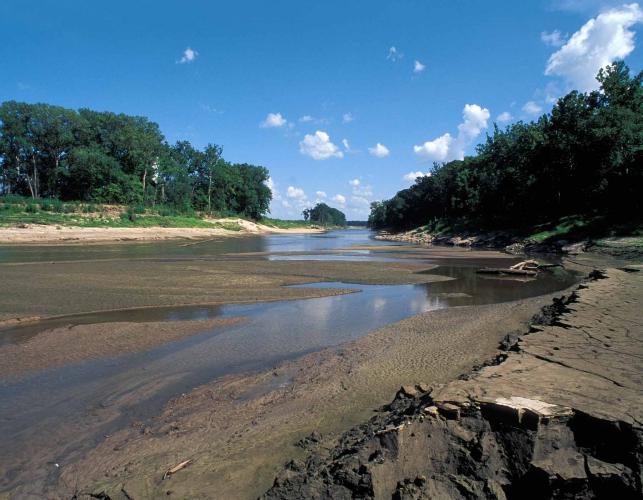


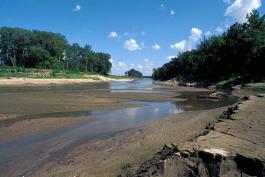


Key species
